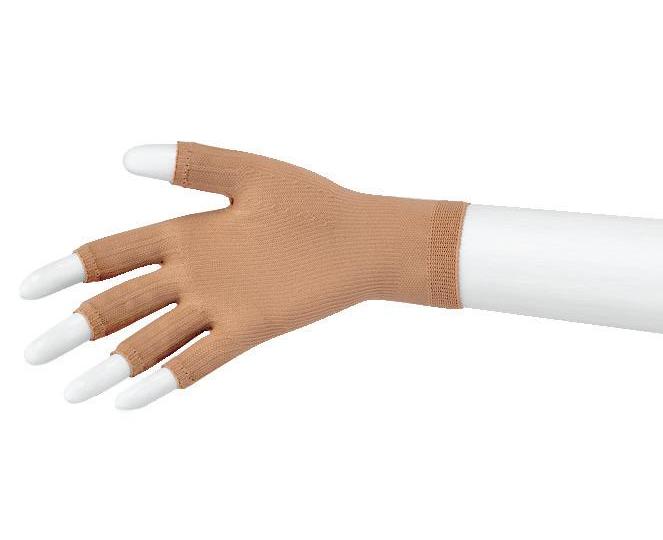Therapist Perspective
Hints and tips
Compression garments for lymphedema By Mona Al Onazi and Rachel Wang
U
sing a compression garment is essential in helping you manage your lymphedema on a daily basis.1 Most of you will have been told to wear your garment during waking hours, from the time you get up until bedtime, or a minimum of 12 hours a day.2 This recommendation is supported by research that has shown that adherence to a well-fitted compression garment can help reduce and/or control swelling.3 We recently completed a study that showed that many women with breast cancer-related lymphedema did not wear their daytime compression garment every day, all day.4 We were surprised, so we conducted a second study involving a survey and focus group sessions to find out why.5 In the second study, women reported many reasons for not wearing their garment.6 Two of the main reasons included discomfort and difficulty with function.7 In our quest to find some solutions to these issues, we explored the hints and tips compiled from previous Pathways articles, and also reached out to patients and clinicians for their thoughts and ideas. In this article, we share some suggestions to help you manage your lymphedema. Discomfort An ill-fitting or poorly applied compression garment can cause discomfort. Not surprisingly, many women reported that discomfort was one of the main reasons for removing their compression garment. A number of issues were reported including poor fit of the garment, tension or tightness in the limb that increased over the day, and discomfort that was due to heat or humid weather. Four regions of discomfort were commonly reported including at the hand, wrist, elbow and upper arm (Table 1). Wi n t e r 2 0 2 0
TABLE 1
Discomfort Poor fit of the garment Fit at the hand (e.g., irritation of thumb and web spaces)
Hints and tips •After every wash, place a thick pen or dowel in, (e.g. the finger holes to stretch out the material. • Ask your fitter if a seamless glove is appropriate for your lymphedema. Fit at the wrist •Try alternating the glove above and below your (e.g., overlap of compression) compression garment at the wrist to see if one method improves tolerance. • Be refitted so that the compression level is not excessive at the wrist. Fit at the elbow •Talk to your fitter and/or therapist regarding the (e.g., nerve compression use of inserts, or different types of garments with and chafing in elbow crease) specialized elbow stitching, or liners. • Try applying talc-free powder or cornstarch at the elbow crease to reduce friction. Fit at the uppermost •If the band is too tight, discuss with your therapist aspect of the arm or fitter options for a garment with a different (e.g., band too tight, shape or method to keep the garment in place. top of sleeve sliding down, •If the top of the sleeve is sliding down, try using and blistering due to a body adhesive product. If the garment is sliding silicon band) a lot, you may need to check the fit or style of the garment. • If there is blistering due to the silicon band this may indicate an allergy or skin sensitivity. Sometimes turning the sleeve inside out or changing to a garment without a silicone top can solve this. • If you have problems with the fit of your garment, it is best to address issues right away. Ask your therapist or fitter about other options to increase comfort such as a custom-made garment. Poor tolerance Hints and tips to compression •Pace your activities through the day to ensure An increased feeling of that you can rest and elevate your limb. tension/tightness in the limb Practicing deep breathing exercises along causing removal of the with elevation may be helpful. garment earlier in the day. • Sometimes the material of the garment (too elastic) may cause the feeling of tension in the limb. Discuss options with your therapist or fitter about switching to a firmer, less elastic material. • Replacing your compression garment regularly is important to ensure the correct level of compression is being applied to your limb. Heat and humidity/ weather Heat-related discomfort and increased heat due to hot flashes or from activity and exercise.
Hints and tips •Try wetting your compression garment with a spray bottle, or putting a frozen gel pack or frozen peas on your limb (not more than 15 minutes). Place your garment in the freezer for about 10 minutes before wearing it to keep your body temperature down and your limb cool. • Try, if possible, to complete your activities (e.g., gardening) in the shade or in the early or late hours of the day when it is cooler outside.
L y m p h e d e m a p a t h w a y s . c a 19




